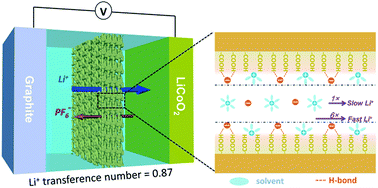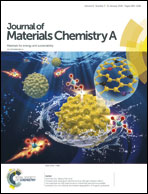Carboxylated polyimide separator with excellent lithium ion transport properties for a high-power density lithium-ion battery†
Abstract
The improvement of lithium ion transport properties, along with the ever-increasing demand for high-power density, is key to boosting the development of lithium-ion batteries. Here, we present a new class of carboxylated polyimide (PI) separator, which can be fabricated via an alkali treatment-based surface modification. The –COOH groups with unshared electron pairs were proposed to contribute to the desolvation of lithium ions and an increase in the lithium ion transport rate. Notably, the modification did not destroy the microstructure of the PI separator, and thus the effect of –COOH groups on the lithium ion transport properties was clearly demonstrated in this work. The result showed that the carboxylated PI separator was conducive to improving the lithium ion transference number (up to 0.87), which is four times higher than that for the original PI separator. More importantly, for the first time, the –COOH group was calculated to increase the lithium ion transport rate by more than six times. Benefiting from its high lithium ion transference number and slightly increased ionic conductivity, the cell assembled with the carboxylated PI separator achieved a better cycle performance and higher rate capability than that with the original PI separator.



 Please wait while we load your content...
Please wait while we load your content...